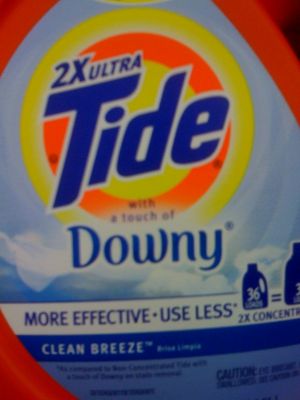CB2 and Land of Nod, both sister brands of my previous employer Crate and Barrel, are holding a contest for writing product reviews on their respective websites. Do you expect the reviews to skew positive in order to win the prize? Does this call into question the authenticity of the review? What do you think?
Why the Drudge Report is one of the best designed sites on the web
A couple weeks ago on Twitter I said: “I still maintain the Drudge Report is one of the best designed sites on the web. Has been for years.” A few people agreed, but most didn’t. Some thought it was a joke. I wasn’t kidding.
To clarify, my definition of design goes beyond aesthetic qualities and into areas of maintenance, cost, profitability, speed, and purpose. However, I still think that the Drudge Report is an aesthetic masterpiece even though I also consider it ugly. Can good design also be ugly? I think Drudge proves it can.
Here are a few reasons, in no particular order, why I think The Drudge Report is one of the best designed sites on the web.

Staying power
People talk about timeless design all the time. But most things people point to that are timeless end up being time stamped. The Drudge Report, on the other hand, has proven timeless. It’s generic list of links, black and white monospaced font, and ALL CAPS headlines have survived every trend, every fad, every movement, every era, every design do or don’t. It doesn’t look old and it doesn’t look new — it looks Drudge. It hasn’t changed since at least 1997, and I believe the design goes back even further. How many sites can survive — and thrive — unchanged for a decade? That’s special.
Continued…Now that Jerry Yang is out as Yahoo CEO, what would you do if you became the next Yahoo CEO? How would you turn Yahoo around?

“More effective, useless.” The Devil is in the details.
Ask 37signals: Does "Getting Real" work in this economy?
David asks:
The recent economic downturn has me wondering… Are small ‘Getting Real’ businesses like 37signals more resistant to the declining economy or is it just that any downside is much less dramatic than multi billion dollar failures and job cuts in the thousands? Have you been impacted directly in reduced growth or increased cancellations as far as you can tell?
How do most companies handle economic downturns? They keep a closer eye on spending, they cut back on hiring (or lay people off), they waste less time, they focus on their core competencies, they push to eliminate complexities, they cut back on long tedious projects and instead focus on quicker wins that have a more immediate impact on the bottom line, and they consolidate roles and trim fat.
This is what Getting Real is all about. Staying small, being frugal, focusing on just a few core things at a time, quick wins, eliminating abstractions that lead to miscommunication and complexity, only doing what you need to do instead of everything you could possibly do, etc. We believe companies that live these ideas are better off all the time — but especially when times get rough.
Charging for your product is safer
Another key tenet of Getting Real is charging for your product. You make something and your customers pay for it. Connecting your revenues to your customers helps you stay focused on the things that really matter to the people who pay your bills. It’s a healthy alignment that helps during tough times.
This isn’t the case when advertisers are the ones funding your operation. When the people using your product aren’t the ones paying for your product you’re at a strategic disadvantage. Your improvements can’t just be targeted at users, they also have to be targeted at advertisers. So now some of your energy is split into pleasing two different groups. It’s possible advertisers and users have the same goals, but it’s less likely. You’ll notice I’m calling people users now. That’s what people become when they don’t pay for your product—they are users, not customers. That changes the entire dynamic.
One more point on advertising-funding businesses: They’re at greater risk in economic downturns. Advertising budgets are among the first to get cut when things go bad. If your business is based on someone else’s advertising budget, you’re in for an especially difficult time in a down market.
Continued…
“Origamized” Basecamp logo
Product blog update: Basecamp monitor on production floor, Highrise Deals API, Tasks vs. To-dos, etc.
Some recent posts at the 37signals Product Blog:
Basecamp
Large monitors on production floor show company’s Basecamp milestones
“I love my new production schedule monitor. Great job and the best part is that I can see the red dates from my office. Everyone here likes it so far or until their project goes red for everyone to see.”

A monitor displays milestones at A. D. Williams Engineering.
VisioPlanning for Basecamp: Keep track of projects and employees in real time
“When an employee is working on a certain project, he must keep his interface up to date by activating the flashing light corresponding to the task(s) he is working on. This update is then automatically carried on to the supervisor interface. This way, the supervisor always knows what the employees are working on in real time.”
Basecamp FAQ: How can I upload or change the photo that appears next to my name?
Tired of seeing that generic person icon inside Basecamp? Then you and your team should upload photos. It’s a simple step, but it really humanizes things when can you see a person’s face next to their words.
Highrise
Highrise Deals API
Attention developers: The Highrise API now works with the new Deals feature.
Multiple products
Discussing when to use Highrise tasks vs. Basecamp to-dos
“There is almost NO time that seeing everything we have to do in one place actually helps us, other than by making us anxious. Theoretically, it sounds nice, but I don’t think there’s a practical application. Instead, I think keeping tasks somewhat separate allow you to focus on what is important right now.”
Why an 'iPod killer' will never kill the iPod
Apple must be smiling whenever one of their competitors bill their next MP3-player as an iPod killer. It reminds everyone who the market leader is and invites them to evaluate the product on Apple’s terms.
If you’re going to be an iPod killer — and not just a great new music player — you have to first out-Apple Apple at all the things that makes the iPod special. That means superior industrial design, an iTMS-beating catalogue of content, and a better desktop experience than iTunes.
That’s almost an impossibly tall order. Which is of course why it hasn’t happened yet and probably won’t happen any time soon.
That doesn’t mean that there’s not room for other entries in the music player department, just that you’re going to have a hell of a time making it if you think cloning the market leader and saying you did it better is the way to do it.
Now replace Apple and the iPod with the gorilla and blockbuster in your niche. Are you setting yourself up to be a Zune?
Highrise: Better import and export
Highrise has been on a roll lately. The new Deals feature has been a huge success. Let’s keep the good news coming. Today we’re excited to roll out two of the most requested features in Highrise: CSV (Excel) import, and exporting of notes/emails from contacts, cases, and deals.
CSV (Excel) import
You’ve always been able to import contacts from vCards, Basecamp, Outlook, and ACT!, but we didn’t provide an option to import data from a CSV file. Many people keep their contacts in Excel, so now you can export those contacts from Excel into a CSV file and import them into Highrise. Here’s how it works (from the Highrise help section). Jamis did a great job putting this feature together.
Export your notes/email
You’ve been able to export your contacts from Highrise in vCard or CSV format for a while now. But starting today you can also export your notes/emails from your contacts, cases, and deals.
Here’s how it works.
Continued…

